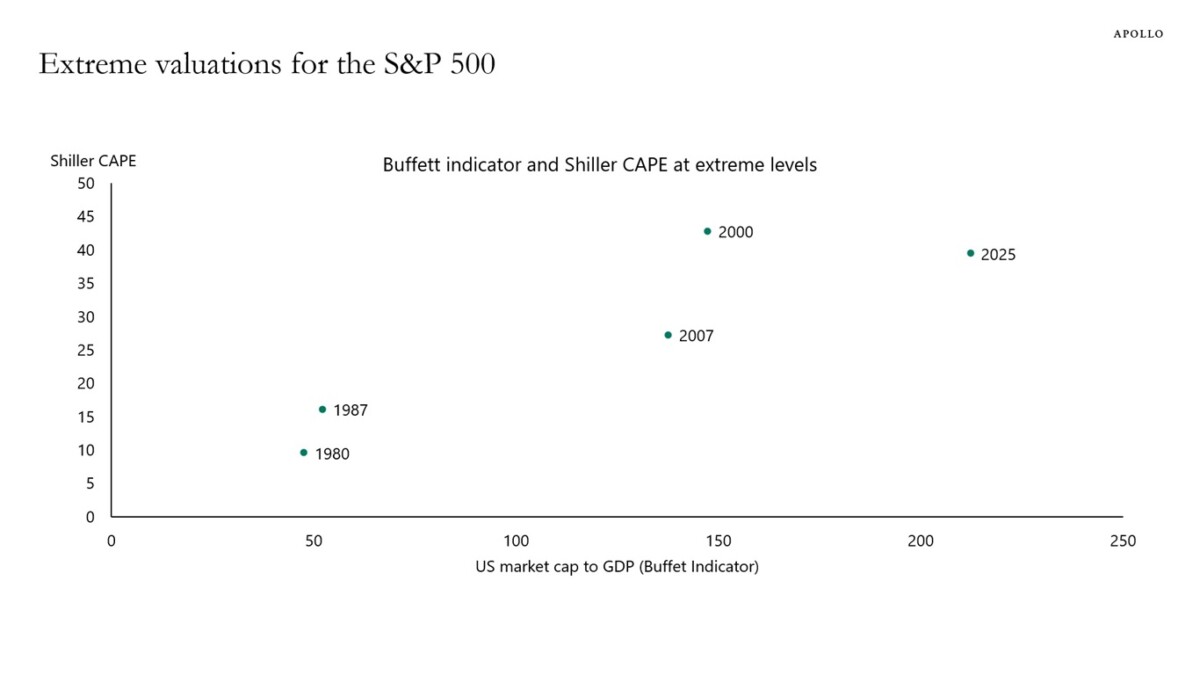Source: Torsten Slok/Apollo.
Combine with Yardeni’s picture of Mag-7 forward PE ratios:
Source: Yardeni, accessed 11/11/2025.
We’d best hope for some tremendous upside earnings surprises going forward. More unsettling graphics and information at the Economist.


Off topic – still harping on Senate Democrats’ Obamacare betrayal:
The CBO has sliced up various outcomes of the health insurance subsidy battle:
https://www.cbo.gov/publication/61734
Using CBO’s analysis, I get something like a $30 billion subtraction from transfers to households in 2026. That’s about 0.1% of GDP, so not enough to induce recession all by itself. The harm falls mostly on the disadvantaged – what else is new? – but is likely to have the secondary effect of driving down health insurance participation and skewing insurance pools toward sicker participants. I can’t imagine that having a positive impact on the economy, but don’t have any good way of guessing how large the damage will be. That drag persists until new legislation changes it, so maybe for all time.
Senate Democrats caving on Obamacare subsidies isn’t in the same macroeconomic league as tariffs or letting Social Security turn PAYGO. But tariffs are also more harmful to poor households that to the rest. So harms from Republican policies are piling upon poorer households. After the mid-term elections, you can add cuts to Medicaid and Medicare. Medicare cuts, in particular, will hurt the rural poor by inducing the closure of non-urban hospitals and clinics. Then, in about 8 or 9 years’ time, cuts to Social Security benefits will hurt the elderly poor most.
The macroeconomic effect of ACA subsidy cuts pales next to some of these other policies. That’s probably not true for harm to individuals. For many, cutting ACA subsidies means the difference between having health insurance and not, between having medical care and not. And that’s on top of all the other harms being done to them by the policies of Republicans, and of a few Democrats.